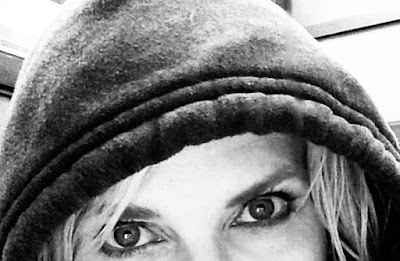 |
| Beautiful, gentle Bowie ❤️ |
Bowie was on doggie death row.
He had been abandoned at a shelter and was five hours from being executed euthanized.
Then the coordinator of the fabulous foster organization I volunteer for rushed in, rescued him, and asked me if I could keep him until I found his forever home.
How could I refuse that face?
When I first met Bowie (who was nameless when he arrived), I was surprised to notice that he was as intimidated by me as I was by him.
In appearance, he was a boxy brute. Inside though, he was a big dog playing small. He was broken, frightened, and he trusted no one.
I didn't know his back story, but I knew I had to write a better future for Bowie.
For that to happen, I needed to earn his trust.
To get Bowie to trust me, I had to extend trust to him.
Instead of expecting any reciprocation of like, love or appreciation, I had to go first.
It took vision, patience, kindness, treats (he loved cheese!), and commitment.
About six days into fostering him, he wagged his tail.
He wagged his tail!
I still smile at the memory!
In the years that I taught Stephen M. R. Covey's Speed of Trust programs to leaders, I always included Bowie's picture in the slide deck and told his story.
(I know we aren't dogs with broken spirits, but man-oh-man we can learn so much from dogs if we pay attention!)
Covey's research asserts that when it comes to building trust-- the one thing that changes everything-- leaders need to extend trust instead of simply expecting to be trusted.
Leaders need to see potential.
Leaders need to shelve their egos.
Leaders need to go first.
"Extending trust is the ultimate act of leadership, the defining skill that transforms a manager into a leader."
Stephen M. R. Covey
Extending trust isn't a blind trust, but rather what Covey calls a "smart trust." Smart trust minimizes risk while maximizing reward. It requires judgment, boundaries, and accountability. It can be scary. It can take time. And it can also change the entire dynamic of a relationship or team.
To extend trust:
- We model the way by being trustworthy. We talk straight, declare our intention, and do what we say we will do. Instead of simply spewing truths and calling it trust-building, we are mindful of the impact of our words and we choose the best ones for any situation. We adapt.
- We gently hold others accountable and help them grow.
- We assume positive intent instead of defaulting to suspicion.
- We prioritize trust. We talk about it, notice it, nurture it, build it, maintain it, and restore it when it wanes.
It's just that simple.
HA!
Building, maintaining, and repairing trust is complex. We are complex! We have agendas, priorities, histories, and biases. I highly recommend that you read Speed of Trust for a much deeper, researched dive. Covey explains it all so well and lays out a step-by-step for leaders, teams, and companies to follow.
But for now, think about this:
Are you extending trust or sowing suspicion?
To whom can you extend smart trust today?
Are you willing to go first?
As for Bowie, he's living the dream on a goat sanctuary with a wonderful family. His forever family sends me holiday pictures every year. ❤️



